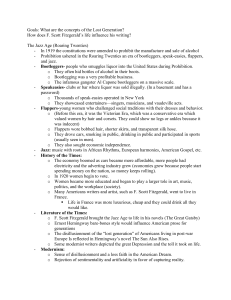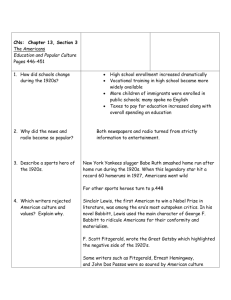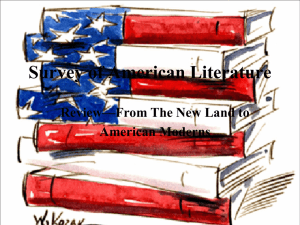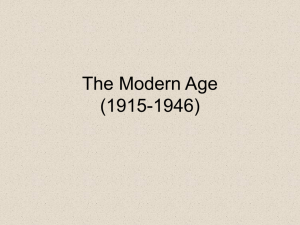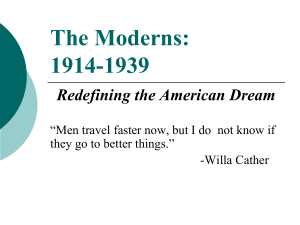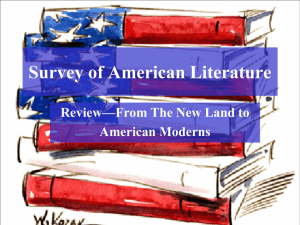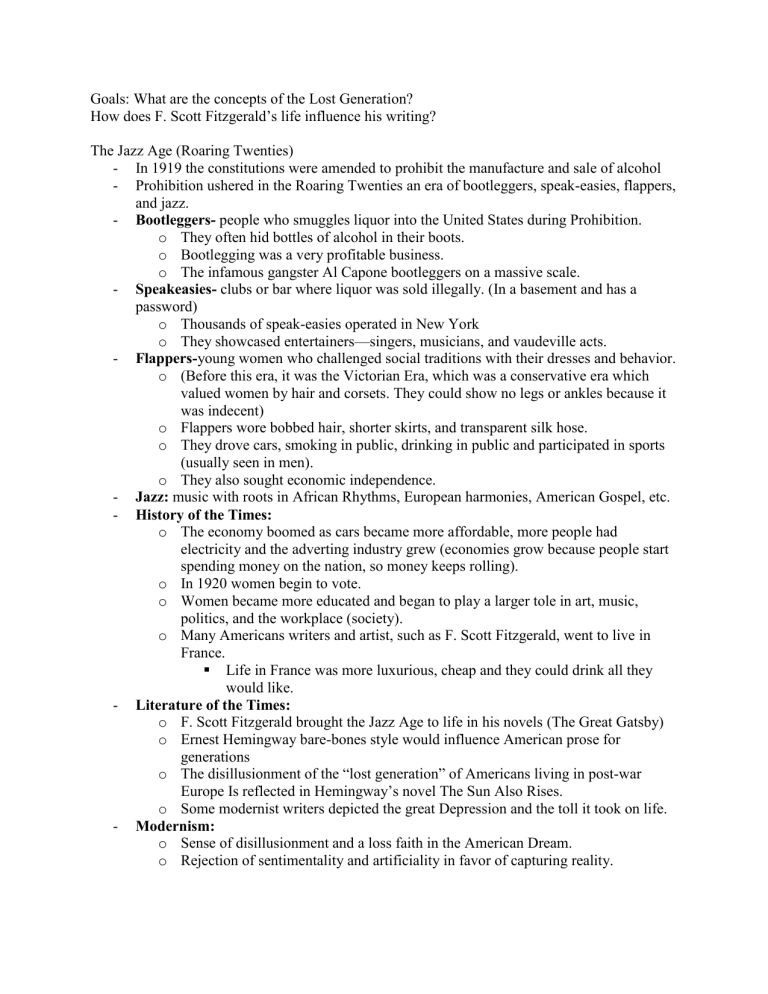
Goals: What are the concepts of the Lost Generation? How does F. Scott Fitzgerald’s life influence his writing? The Jazz Age (Roaring Twenties) - In 1919 the constitutions were amended to prohibit the manufacture and sale of alcohol - Prohibition ushered in the Roaring Twenties an era of bootleggers, speak-easies, flappers, and jazz. - Bootleggers- people who smuggles liquor into the United States during Prohibition. o They often hid bottles of alcohol in their boots. o Bootlegging was a very profitable business. o The infamous gangster Al Capone bootleggers on a massive scale. - Speakeasies- clubs or bar where liquor was sold illegally. (In a basement and has a password) o Thousands of speak-easies operated in New York o They showcased entertainers—singers, musicians, and vaudeville acts. - Flappers-young women who challenged social traditions with their dresses and behavior. o (Before this era, it was the Victorian Era, which was a conservative era which valued women by hair and corsets. They could show no legs or ankles because it was indecent) o Flappers wore bobbed hair, shorter skirts, and transparent silk hose. o They drove cars, smoking in public, drinking in public and participated in sports (usually seen in men). o They also sought economic independence. - Jazz: music with roots in African Rhythms, European harmonies, American Gospel, etc. - History of the Times: o The economy boomed as cars became more affordable, more people had electricity and the adverting industry grew (economies grow because people start spending money on the nation, so money keeps rolling). o In 1920 women begin to vote. o Women became more educated and began to play a larger tole in art, music, politics, and the workplace (society). o Many Americans writers and artist, such as F. Scott Fitzgerald, went to live in France. Life in France was more luxurious, cheap and they could drink all they would like. - Literature of the Times: o F. Scott Fitzgerald brought the Jazz Age to life in his novels (The Great Gatsby) o Ernest Hemingway bare-bones style would influence American prose for generations o The disillusionment of the “lost generation” of Americans living in post-war Europe Is reflected in Hemingway’s novel The Sun Also Rises. o Some modernist writers depicted the great Depression and the toll it took on life. - Modernism: o Sense of disillusionment and a loss faith in the American Dream. o Rejection of sentimentality and artificiality in favor of capturing reality. - o Emphasis on bold experimentation in style and form, reflecting the fragmentation of society. o Interest in the individual and their inner workings of the human mind. Video: o Disillusioned writers to Paris to have creative freedom, writers to work on changing literary form o Paris is a moveable fiesta. o Gertrude Stein, Ernest Hemingway, F. Scott Fitzgerald, James Joyce, Ezra Pound o Lost Generation: greatest concentration of art and literature in the 20th century. o America was beneath the level of great fiction. o Lost Generations: writers, educated on the European culture that based in bools. They thought that it was upon them to save that culture. o The term is also used more generally to refer to the post-World War I generation. The generation was “lost” in the sense that its inherited values were no longer relevant in the postwar world and because of its spiritual alienation from a United States that, basking under Pres. Warren G. o In the 20’s in the states, the American was very repressive, and “prohibition” started. The business of America was business.
